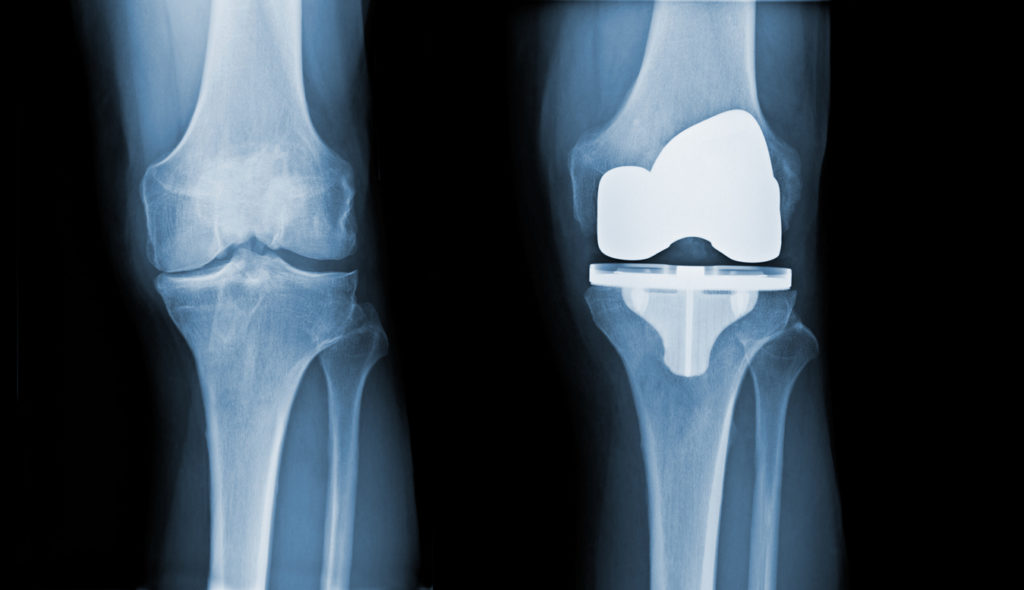Have you ever imagined what your life would be like if chronic knee pain disappeared completely?
If you could walk, run, and even dance without an annoying sensation or sharp pain stopping you?
For millions of people around the world, this dream remains distant due to deteriorating knee joints.
But there’s a big ray of hope: knee replacement, a remarkable surgical procedure that changes many lives.
Liva Hospital in Turkey is one of the leading medical institutions that offers this type of surgery with high quality to solve the problems of many people, especially the elderly.

1. The Bionic Knee (An Engineering Masterpiece Inside Your Body!)
When we talk about knee replacement, we’re not just talking about a simple swap, but about implanting a true engineering marvel!
The artificial joint isn’t a single piece; it consists of several precise parts: a metal femoral component, a metal tibial component, and a high-quality plastic piece that acts as artificial cartilage.
These components are designed to perfectly match human anatomy and are made from materials like titanium, cobalt-chrome, and polyethylene, which have high biocompatibility with the body and amazing wear resistance.
Imagine having a bionic joint inside your knee designed to last for decades, giving you the ability to move smoothly as if nothing had ever happened!
2. Goodbye to Pain (The Key to a New Life!)
Let’s think for a moment about chronic pain. It’s not just a physical sensation; it’s a prison that restricts your freedom and drains your psychological energy.
When knee wear reaches an advanced stage, pain becomes a constant companion, depriving you of sound sleep and preventing you from performing the simplest daily activities.
This is where knee replacement acts as a “magic key.” Once the damaged parts that caused friction and pain are removed and replaced with a new, smooth joint, most patients describe an immediate feeling of relief and significant pain reduction.
It’s not just a surgical procedure; it’s an opportunity to start a new page free from the shackles of pain.
3. Future Technologies (Robots and Surgical Navigation in the Operating Room!)
Did you know that robots are now assisting surgeons in operating rooms?
Yes, this isn’t science fiction! In modern hospitals like Liva Hospital in Turkey, advanced technologies such as computer-assisted surgical navigation and robotics are used to perform knee replacement surgeries.
These technologies give surgeons unparalleled precision in determining incision locations and fixation angles, ensuring the artificial components are placed with the utmost accuracy.
This means a more stable joint, better function, and a longer lifespan. Imagine undergoing surgery with technology that’s closer to the future than the present!
4. Preparing for the Run (The Rehabilitation Journey!)
The word “rehabilitation” might sound a bit boring, but it’s actually an exciting and challenging journey that leads you towards a clear goal: regaining your freedom of movement!
After the operation, physical therapists will encourage you to move early, starting with simple exercises in bed and progressing to walking with crutches.
Every day is a new step, and every exercise completed is a small victory.
Imagine starting from scratch and gradually regaining your knee’s ability to bend and strengthen, eventually reaching a stage where you can walk long distances, and even cycle or swim.
It’s a fun learning journey for your body and your new knee!
5. The Smart Knee
The artificial knee joint isn’t just a rigid piece; it’s a smart design that adapts to your body’s diverse movements.
It’s designed to allow you a wide range of movements essential for daily life, such as walking, sitting, standing, and climbing stairs.
Over time, the new joint will become a natural part of your body, and you’ll adapt to its smooth movement.
You’ll be amazed at how quickly you forget you have an artificial joint and how it will be able to meet your daily life demands without a second thought.
6. Inspiring Stories
Do you think knee replacement means the end of your athletic life or hobbies? Think again! There are countless inspiring stories of people who have undergone this surgery and returned to their favorite sports and hobbies.
From playing golf and swimming to long-distance walking and even dancing. The key is to choose appropriate low-impact activities, listen to your body, and follow the guidance of your doctor and physical therapist.
It’s not the end, but the beginning of a new chapter full of activity and enjoyment!
7. Psychological Change: From Despair to Hope
Chronic pain isn’t just physical; it has a profound impact on mental health. Feelings of despair, isolation, and depression can dominate patients’ lives.
But after successful knee replacement surgery, the pain often disappears, and patients gradually return to their social activities and hobbies.
This transformation is not just physical; it’s a tremendous psychological shift from despair to hope, and from withdrawal to active participation in life.
It’s a process that restores not only your ability to walk but also your ability to smile and enjoy life.
8. The Lasting Joint
The materials used in manufacturing artificial joints are constantly evolving. New generations of joints are made from stronger, more wear-resistant metal alloys, and advanced types of polyethylene with superior gliding properties.
These developments mean that today’s artificial joint is designed to last much longer than in the past, reducing the likelihood of needing revision surgeries in the future. So, it’s a long-term investment in your health and mobility.

9. Modern Anesthesia
Are you apprehensive about anesthesia?
With modern anesthesia techniques, the experience has become safer and more comfortable.
Doctors can choose between general anesthesia, which makes you completely asleep, or regional anesthesia (epidural), which numbs only the lower part of your body, while you remain conscious or in a state of deep relaxation.
Thanks to modern techniques and safer anesthetic drugs, nausea and other side effects are significantly reduced, making the surgical experience less strenuous and more comfortable for the patient.
10. Your Decision, Your Life
Ultimately, the decision to undergo knee replacement surgery is a very personal one.
But knowing all these interesting and important aspects empowers you to make an informed choice.
Don’t hesitate to ask questions, seek out the best options available to you, and listen to your body.
Remember, you deserve to live a life free from pain and full of movement and activity. Are you ready to embrace this exciting challenge and regain your knee’s freedom?
Conclusion
It’s been an enjoyable journey exploring interesting and amazing aspects of knee replacement surgery.
From the incredible engineering design of the artificial joint to the role of robots in the operating room, and the positive psychological transformations experienced by patients, it’s clear that this surgery is not just a medical procedure, but a qualitative leap towards a better life.
It’s a real opportunity to regain vitality and activity, and to re-engage in activities that give meaning to our existence.
Remember, with scientific advancement and medical expertise available at world-class centers like Liva Hospital, chronic knee pain is no longer an inevitable fate, but a challenge that can be overcome.
Frequently Asked Questions
Will I feel the “artificial knee” inside my body?
Initially, you might feel some difference or a strange sensation, but over time and with continued physical therapy, your body will adapt to the new joint, and the feeling will become less noticeable. Many even completely forget they have an artificial joint.
Are there weight limits after knee replacement surgery?
Yes, maintaining a healthy weight is crucial after surgery. Excess weight puts additional pressure on the artificial joint, which can lead to faster wear and reduce its lifespan. Your doctor will provide guidance on the ideal weight you should aim for.
Can I kneel after knee replacement?
The ability to kneel varies from person to person. Some patients can kneel after surgery, while others find it difficult or uncomfortable. It depends on the type of joint implanted, your response to physical therapy, and the comfort of the new joint.
Can I return to work after surgery?
The time to return to work depends on the nature of your job. If your work is desk-based or requires light physical effort, you might be able to return within 6 to 8 weeks. However, if your job requires significant physical exertion or heavy lifting, you may need a longer recovery period, perhaps 3 to 6 months.
Can the artificial joint be rejected by the body?
Cases of artificial joint rejection are very rare. Materials with high biocompatibility with the body are used, which significantly reduces the likelihood of an allergic reaction or rejection by the immune system. However, complications such as infection or loosening may occur, which require medical intervention.
Can I drive after a knee replacement?
Generally, you can start driving when you are able to move your knee freely enough to safely control the pedals and are not taking strong pain relievers that may affect your alertness. This is usually 4 to 6 weeks after surgery, but you should always consult your doctor first.



